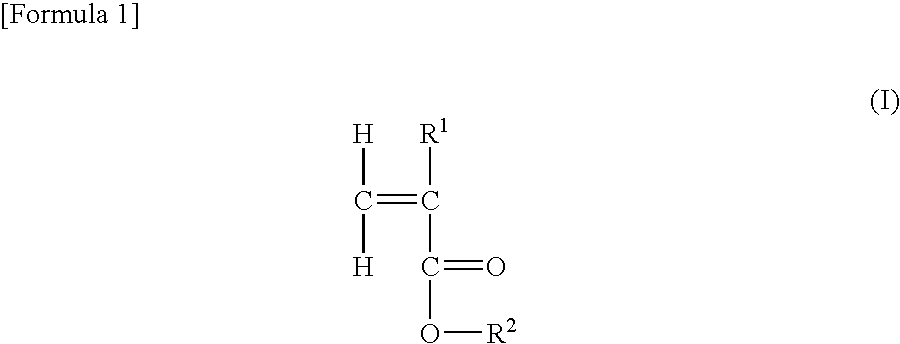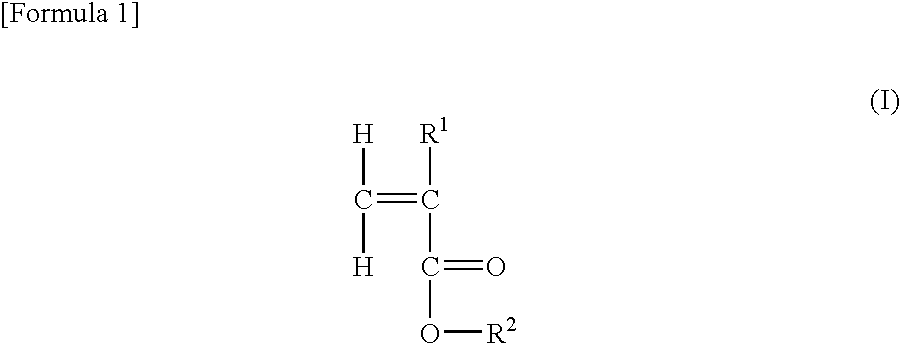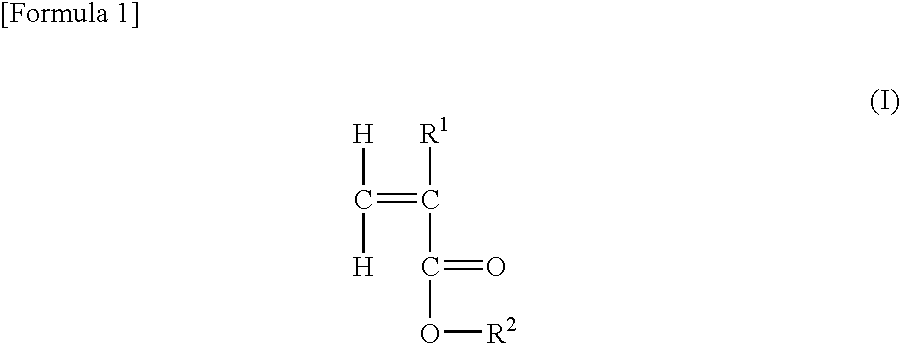Binder for secondary battery electrode, secondary battery electrode, and secondary battery
- Summary
- Abstract
- Description
- Claims
- Application Information
AI Technical Summary
Benefits of technology
Problems solved by technology
Method used
Image
Examples
example 1
[0095]Put 200 parts of toluene, 0.1 parts of 2,2′-azobisisobutyronitrile as a polymerization initiator, 40 parts of 2-(perfluorotetradodecyl)ethyl acrylate, 60 parts of 2-ethylhexyl acrylate into a glass reactor, after operating nitrogen substitution sufficiently, initiating polymerization by heating to 80° C. Then, finish the reaction after 5 hours by cooling to obtain toluene solution of the polymer. A weight-average molecular weight of said polymer is 120000.
[0096]Blending said polymer solution and 3 times weight of N-methylpyrrolidone, vaporizing the toluene by an evaporator to obtain N-methylpyrrolidone solution of the polymer. The slurry for electrode and the battery are produced by using this polymer solution with the above mentioned method. Evaluation result is shown in Table 1.
example 2
[0097]Other than using 10 parts of 2-(perfluorooctyl)ethyl acrylate instead of the 2-(perfluorotetradodecyl)ethyl acrylate, 90 parts of butyl acrylate instead of 2-ethylhexyl acrylate, operating polymerization under similar condition with the example 1, and toluene solution of the polymer is obtained. Note that a weight-average molecular weight of the polymer is 200000. A test similar with the example 1 is performed by using said polymer solution. A result is shown in Table 1.
example 3
[0098]Other than using 10 parts of 2-(perfluorohexyl)ethyl acrylate instead of the 2-(perfluorotetradodecyl)ethyl acrylate, and using 90 parts of 2-ethylhexyl acrylate instead of 60 parts of 2-ethylhexyl acrylate, operating polymerization under similar condition with the example 1, and toluene solution of the polymer is obtained. Note that a weight-average molecular weight of the polymer is 200000. A test similar with the example 1 is performed by using said polymer solution. A result is shown in Table 1.
PUM
| Property | Measurement | Unit |
|---|---|---|
| Electrical resistance | aaaaa | aaaaa |
| Molecular weight | aaaaa | aaaaa |
| Ratio | aaaaa | aaaaa |
Abstract
Description
Claims
Application Information
 Login to View More
Login to View More - R&D
- Intellectual Property
- Life Sciences
- Materials
- Tech Scout
- Unparalleled Data Quality
- Higher Quality Content
- 60% Fewer Hallucinations
Browse by: Latest US Patents, China's latest patents, Technical Efficacy Thesaurus, Application Domain, Technology Topic, Popular Technical Reports.
© 2025 PatSnap. All rights reserved.Legal|Privacy policy|Modern Slavery Act Transparency Statement|Sitemap|About US| Contact US: help@patsnap.com



